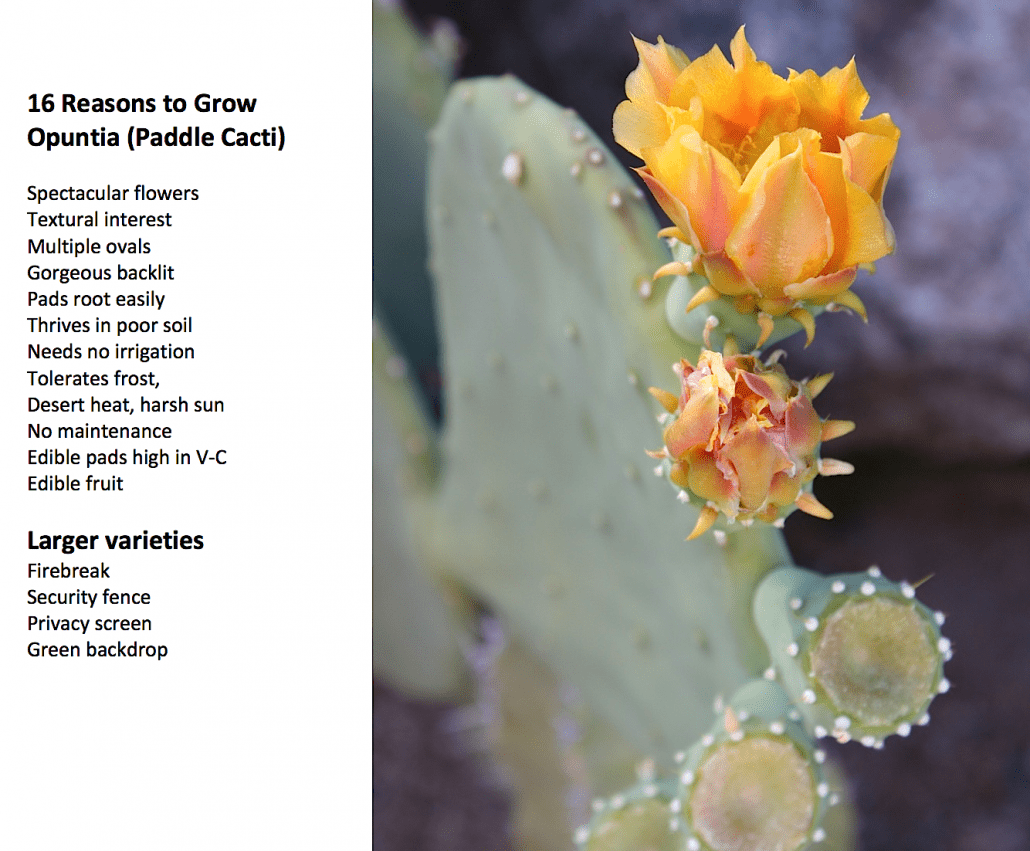
Of the dozen or so types of cacti in my garden, I have more opuntias than any other. Also known as paddle cactus or prickly pear, Opuntia species have stems shaped like ping-pong paddles. New pads grow from older ones after rains drench the roots and help fuel new growth. Typically these new pads, and flowers that turn into fruit, form along the edge of the pads and orient themselves for maximum sun exposure. For garden plants, I prefer spineless or near-spineless varieties, like Opuntia cacanapa ‘Ellisiana’, O. ‘Burbank’s Spineless’ and O. ficus-indica. These grow from 3 to 7 feet tall.
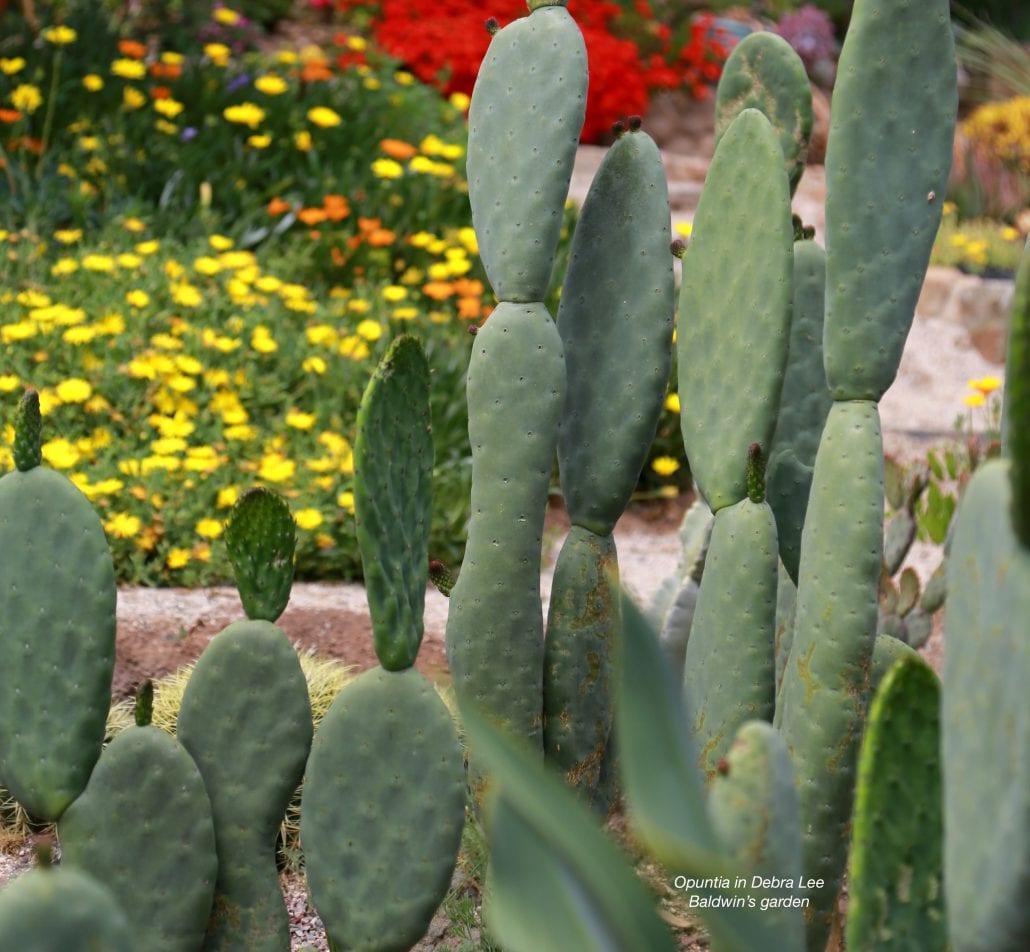
I also have dwarf varieties in my miniature landscape, which I designed to suggest a Latin American mountain town. Photos of it and the specimen below are in my book, Designing with Succulents, 2nd ed.
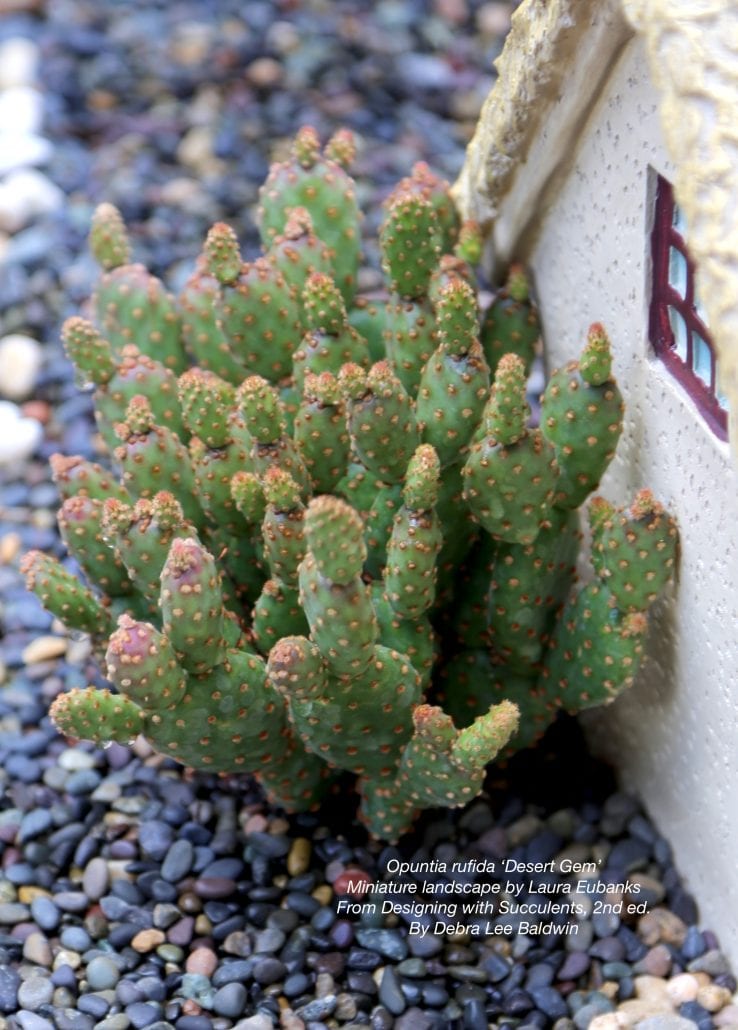
Flowers of opuntias are spectacular, and open in succession. So although the blooms last only a day or so, the show lasts a week or more.

As with all cactus, opuntia spines are modified leaves. There’s a good reason to grow prickly varieties—whether Opuntia species or others, they’re breathtakingly beautiful when late afternoon or early morning sun backlights translucent spines.
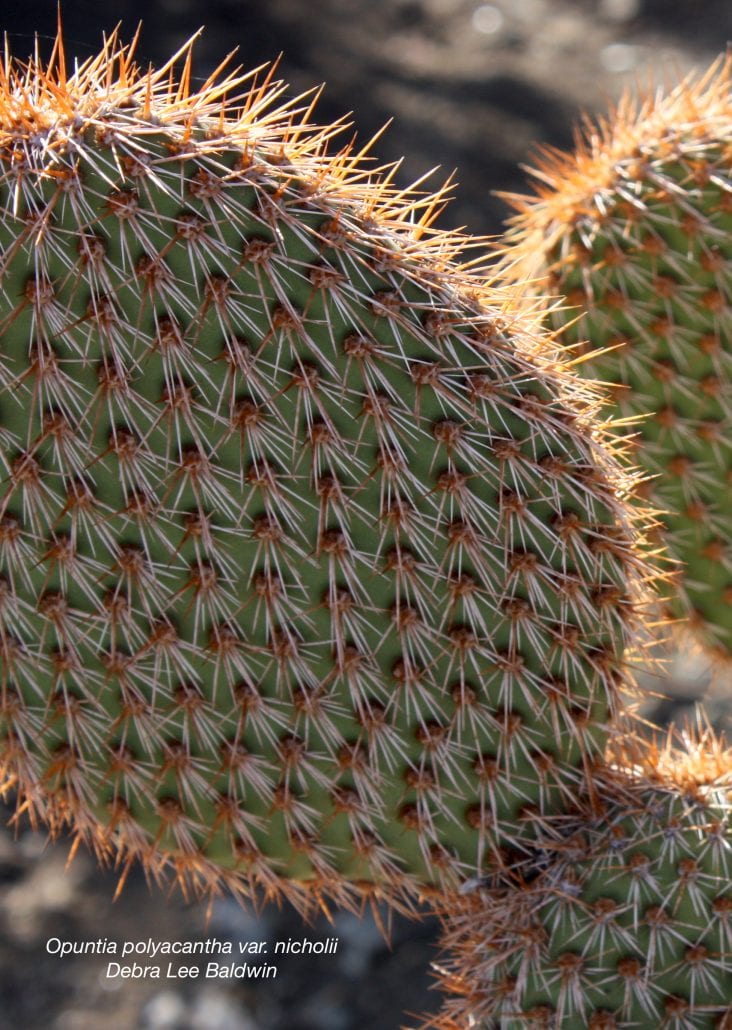
Certain varieties, such as O. Santa-rita, have purple pads. It’s been my observation that these tend to attain their best color in desert gardens; here in Southern CA, the pads stay green with a purple tinge.
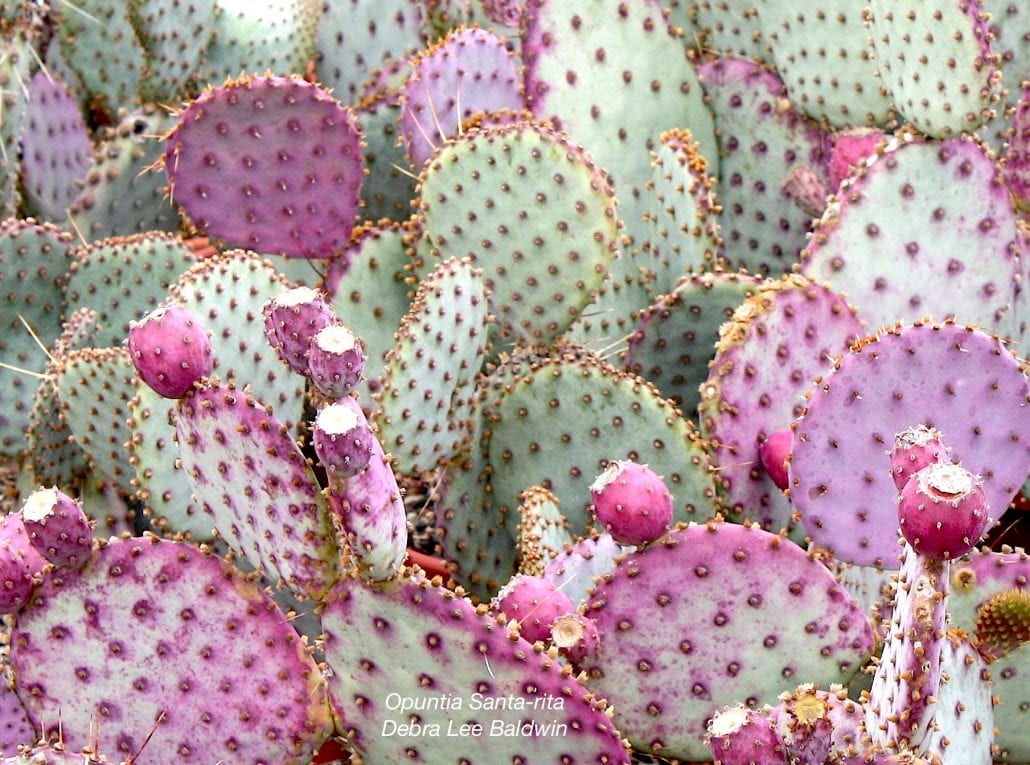
I grow an intriguing variety that has beard-like white filaments, but I recently had to trash much of the plant because scale insects snuck under the threads and colonized the pads unnoticed. I did manage to keep a few unblemished ones, which I treated with Safer soap and replanted.
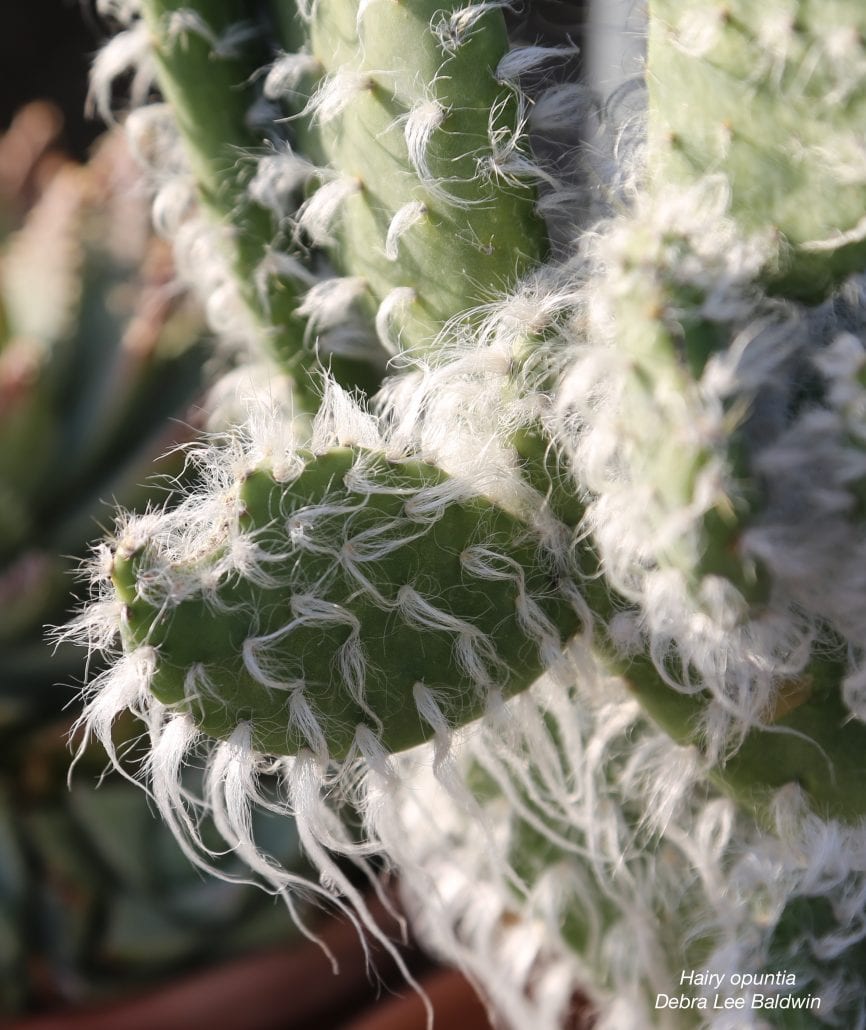
Opuntias are easy to start from pads; simply slice or break one off and stick it in the ground. Knock one off, and where it falls it’ll form roots.
The egg-shaped fruit of opuntias is edible and a colorful garden enhancement.

Opuntias are unique among cacti in that they have two types of spines—needles and glochids. The latter often is nearly invisible, barbed, and will go home with you if you touch it. Glochids create fuzzy polka-dots on the paddles of Opuntia microdaysis. Beautiful…but beware.
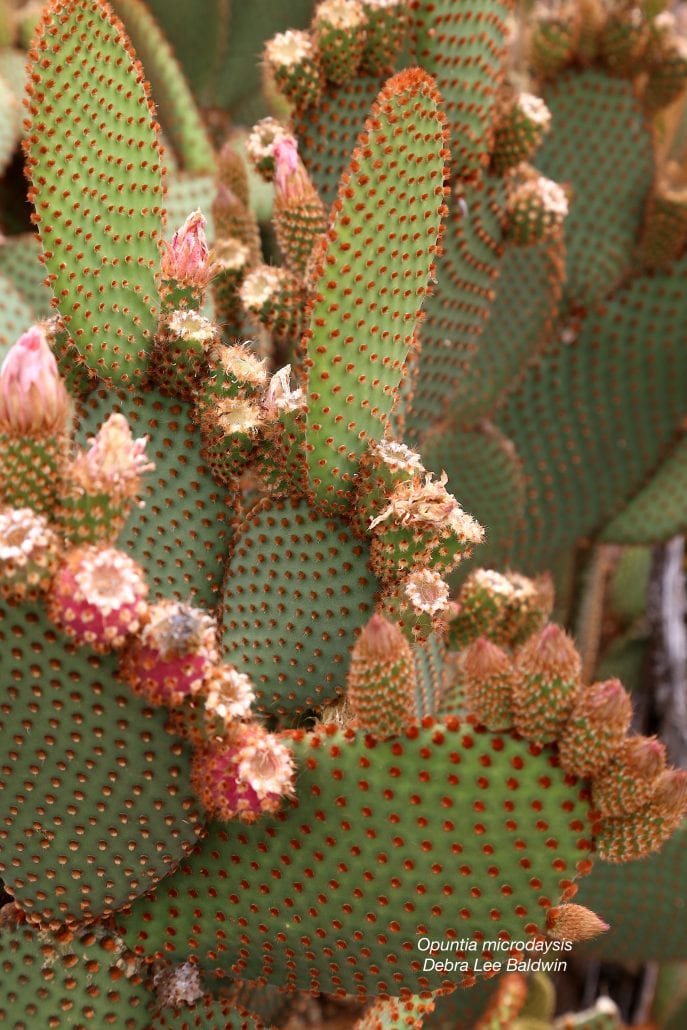
Because cactus pads are moisture-storage organs filled with a mucilaginous gel and protected by a tough, waxy skin, they’re slow to catch fire. Opuntias not only make great firebreak plants in wildfire-prone areas, they’re efficient at conserving water and need no irrigation other than rainfall.

Tender new opuntia pads (nopalitos) are sold in Mexican markets. They’re good in salads and can be cooked as a vegetable dish that tastes like green beans.
Let me know what you think. I always enjoy hearing from you! ~ Debra
Related Info
Is Cactus the New Black?
Aug. 9, 2017 — Long a pariah plant, cactus is becoming cool. Spiny succulents are following smooth ones in popularity, notably in [Continue reading]
The post Why Grow Paddle Cacti? DLB’s 16 Reasons appeared first on Succulents and Succulent Garden Design | Debra Lee Baldwin.
from Succulents and Succulent Garden Design | Debra Lee Baldwin https://ift.tt/2F7PRdn
via IFTTT




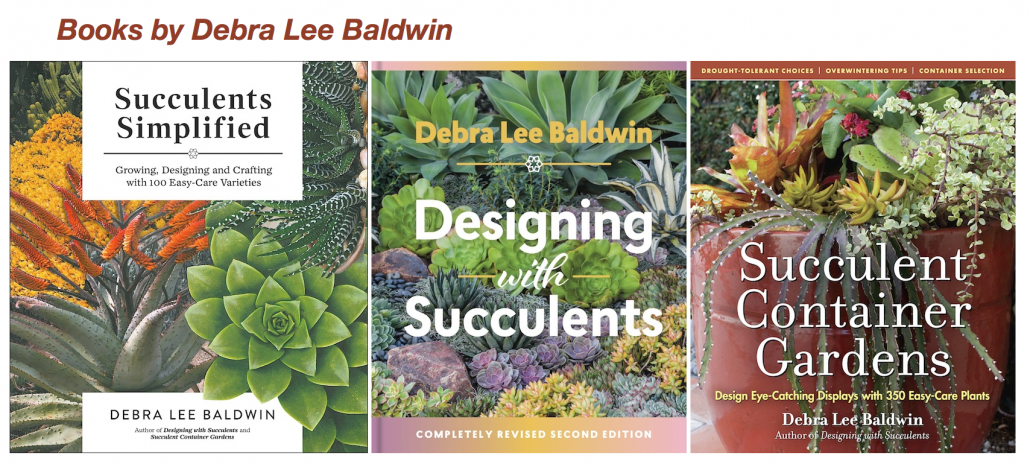
No hay comentarios:
Publicar un comentario